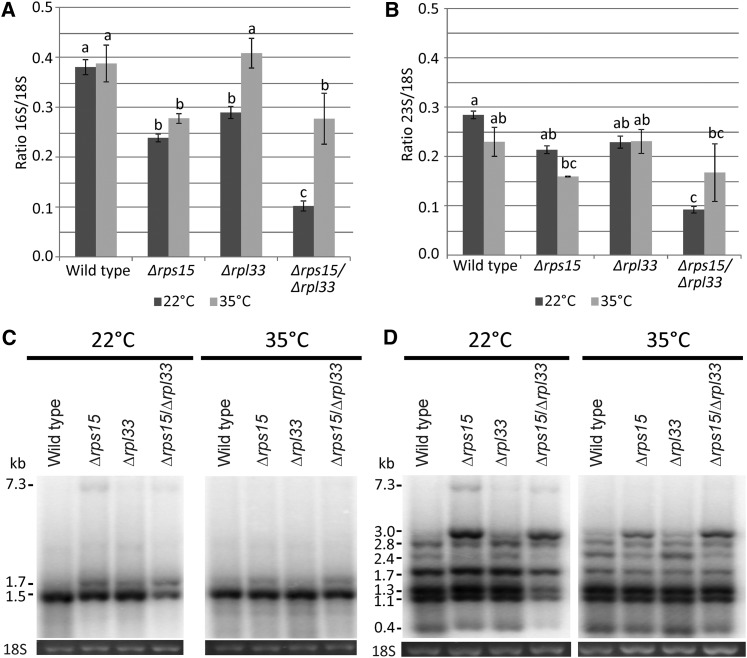Figure 5.
Growth at Elevated Temperatures Alleviates the Molecular Phenotype of ∆rps15/∆rpl33 Mutants.
(A) and (B) Accumulation of rRNAs as a proxy for the corresponding ribosomal subunits in seedlings of the wild type and the ribosomal protein mutants ∆rps15, ∆rpl33, and ∆rps15/∆rpl33. The plants were germinated and grown for 29 d on synthetic medium at either 22 or 35°C. The mean of three biological replicates is shown. The error bars indicate the sd. Statistically significant differences (two-way ANOVA and Scheffé test; P < 0.05) are indicated by the letters above the bars.
(A) Ratio of the plastid 16S rRNA to the cytosolic 18S rRNA at 22°C (dark-gray bars) and 35°C (light-gray bars).
(B) Ratio of the plastid 23S rRNA to the cytosolic 18S rRNA at 22 and 35°C.
(C) and (D) Accumulation and processing patterns of plastid rRNAs at 22 and 35°C. The ethidium bromide–stained cytosolic 18S rRNA band of the agarose gel prior to blotting is shown below each blot as a loading control. For a schematic representation of rRNA processing patterns, see Figure 3C.
(C) Comparison of 16S rRNA accumulation and processing at 22°C versus 35°C.
(D) Comparison of 23S rRNA accumulation and processing at 22°C versus 35°C.

